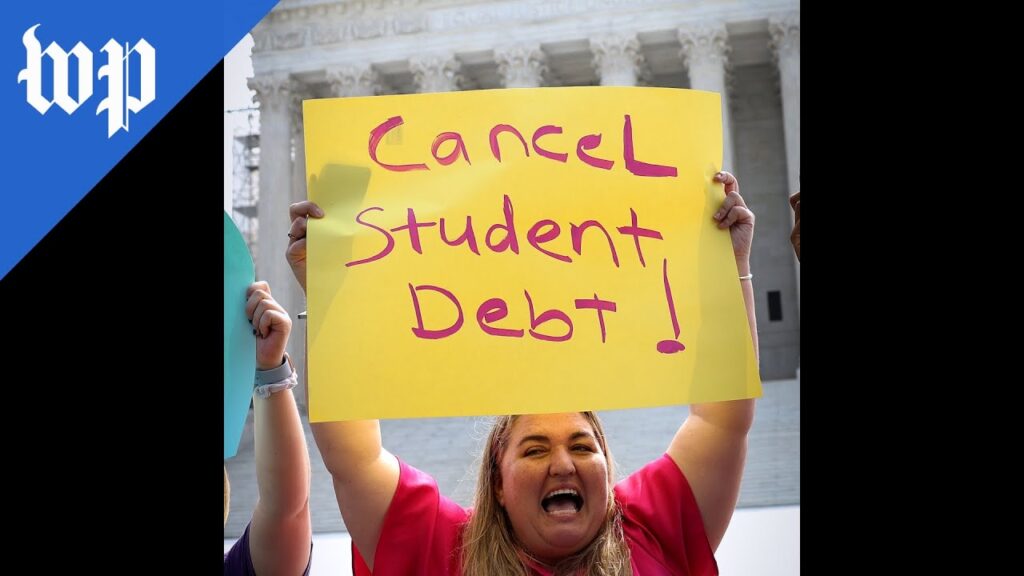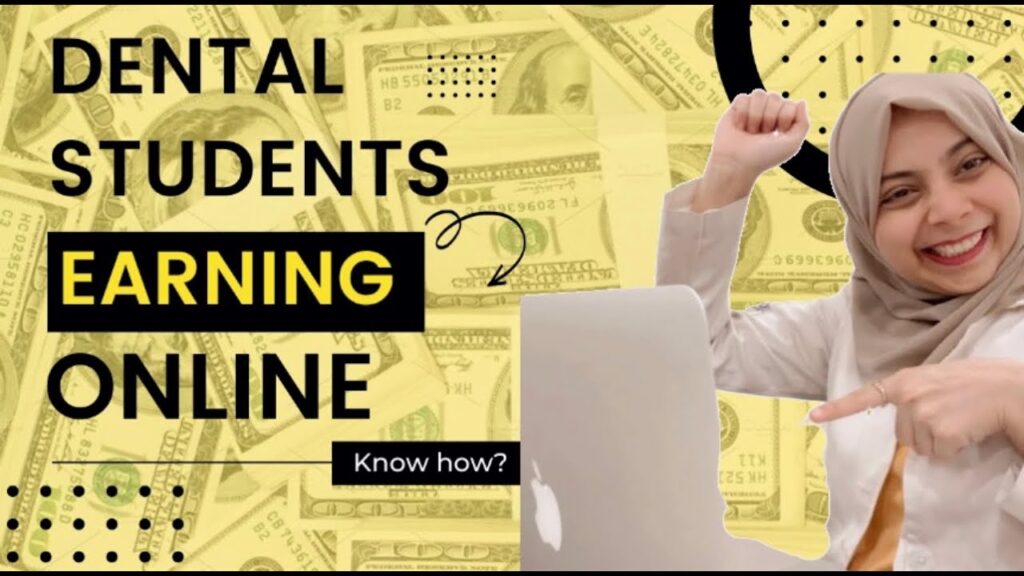In the United States, the topic of student debt cancellation has ignited a passionate debate, one characterized by a cacophony of opinions and perspectives.
Some argue that it is an essential measure to alleviate the burdens faced by struggling borrowers, while others contend that it would be an unjust burden on taxpayers.
The issue, at its core, is complex and multi-faceted, with significant implications for both individuals and the nation as a whole.

ALSO SEE:
Should College Education be Free?
Best Ways to Earn Money as a Student in the UK
How to Make Money as a Law Student in the USA: Tips and Opportunitie
Scholarship In USA For Nigerian Students
Top Best Ways to Make Money Online as a Student in the USA
The Biden Administration’s Proposal
The Biden administration has taken a significant step in addressing this issue, proposing a plan to cancel student debt.
Under this plan, up to $20,000 in student loan debt would be forgiven for Pell Grant recipients, and up to $10,000 for non-Pell Grant recipients.
This proposal, however, is not without its challenges, as it currently faces legal opposition, leaving its fate uncertain.
Alternative Paths to Debt Cancellation
Beyond the administration’s proposal, there exist alternative avenues to seek student loan debt forgiveness in the USA.
For instance, individuals working for specific nonprofit or government organizations may qualify for Public Service Loan Forgiveness (PSLF).
Additionally, borrowers who become disabled may be eligible for loan forgiveness, offering a lifeline to those facing unforeseen circumstances.
Moreover, a variety of smaller loan forgiveness programs cater to borrowers who meet specific criteria.
These include programs tailored for educators in low-income schools, as well as those for healthcare professionals, allowing individuals in these fields to find some relief from their student loan obligations.
Exploring All Options
For those grappling with the weight of student loans, it is crucial to explore every available option.
Eligibility for one of the many loan forgiveness programs can provide substantial relief.
Additionally, discussing alternatives with your loan servicer, such as income-driven repayment plans, may offer a path towards more manageable loan payments.
Pros of Student Debt Cancellation
1. Relief for Struggling Borrowers
One of the most compelling arguments in favor of student debt cancellation is the relief it would bring to struggling borrowers.
Many individuals find themselves shackled by substantial debt, unable to save for their future or achieve their financial goals. Debt forgiveness could offer them a fresh start and a brighter financial outlook.
2. Economic Stimulus
Student debt cancellation has the potential to stimulate the economy.
As borrowers are freed from the burdens of monthly loan payments, they can redirect their funds towards other vital sectors, such as housing and small businesses.
This surge in spending could, in turn, invigorate local economies and foster financial growth.
3. Racial Wealth Gap Closure
Another crucial aspect of student debt cancellation is its potential to close the racial wealth gap.
Studies show that Black and Hispanic borrowers are more likely to carry student loan debt compared to their white counterparts.
Forgiving this debt would help rectify this financial disparity, promoting economic equality.
Cons of Student Debt Cancellation
1. Taxpayer Expense
One of the most significant concerns surrounding student debt cancellation is the cost to taxpayers. The Biden administration’s plan alone is estimated to require an expenditure of approximately $400 billion. This sizable amount would need to be sourced from taxpayers, raising questions about the fairness of the burden.
2. Potential Benefit to High-Income Borrowers
Critics argue that student debt cancellation may inadvertently benefit individuals who do not truly require assistance, such as high-income borrowers who have the financial capacity to repay their loans. This could be seen as an unjust allocation of resources.
3. Tuition Inflation
Another contentious issue is the possibility of colleges and universities increasing their tuition fees, safe in the knowledge that the government will bail out borrowers. Critics argue that this could lead to inflation in tuition costs, which would exacerbate the student debt crisis in the long run.
Will student loans be forgiven in the US?
In recent times, the question of whether student loans will be forgiven in the United States has become a hot topic of discussion.
With President Biden’s proposal to alleviate the financial burdens of students by canceling a portion of their debt, the possibility of student loan forgiveness seems to hang in the balance.
This post aims to delve into the intricacies of this matter, exploring not only President Biden’s plan but also alternative paths to achieving student loan forgiveness, should his proposal face challenges or roadblocks.
The Biden Plan: Hope on the Horizon?
President Biden’s proposal holds the potential to provide relief to countless students struggling with the weight of their educational debt.
The plan includes two significant provisions: forgiving up to $20,000 in student loan debt for Pell Grant recipients and up to $10,000 for non-Pell Grant recipients.
This initiative seeks to address the disparities in student loan forgiveness based on financial need. However, it is important to note that the fate of this plan is far from certain.
Legal challenges and political debates continue to swirl around it, raising questions about its implementation.
Exploring Alternative Avenues
While President Biden’s plan remains uncertain, there are other routes to explore when it comes to student loan forgiveness in the United States.
These alternatives can provide a glimmer of hope for borrowers seeking relief from the heavy burden of their educational debt.
Public Service Loan Forgiveness (PSLF)
For those working in specific non-profit or government organizations, the Public Service Loan Forgiveness (PSLF) program offers a ray of hope.
This program allows eligible individuals to have their student loans forgiven after making 120 qualifying payments while employed in public service.
Despite its complexities and stringent requirements, it remains a viable path for loan forgiveness.
Disability Discharge
Becoming disabled can be a life-altering event, but for some, it may also lead to student loan forgiveness.
Borrowers who face the unfortunate circumstances of disability can potentially have their loans discharged, offering a lifeline to those dealing with both health and financial hardships.
Specialized Loan Forgiveness Programs
In addition to the broader forgiveness programs, there are specialized initiatives that cater to specific professions and sectors.
Teachers who dedicate their careers to low-income schools can explore forgiveness programs tailored to their profession. Similarly, healthcare professionals may find specific programs designed to alleviate their educational debt burdens.
It’s essential to investigate the possibilities within your chosen field.
Income-Driven Repayment Plans
If none of the aforementioned forgiveness options align with your circumstances, there’s still an alternative to manage your student loans more effectively.
Income-driven repayment plans can be tailored to your income and family size, ensuring that your monthly payments are manageable while maintaining progress towards loan forgiveness over time.
Preparing for an Uncertain Future
As we navigate the unpredictable landscape of student loan forgiveness in the US, it’s crucial for borrowers to remain proactive and informed.
To prepare for the possibility of loan forgiveness, consider the following steps:
- Stay Informed: Keep a close eye on the latest developments and news surrounding student loan forgiveness. Changes and new initiatives may impact your eligibility.
- Explore Options: Familiarize yourself with the various forgiveness programs and income-driven repayment plans available. Your specific situation may align with a particular program.
- Consult Your Loan Servicer: Don’t hesitate to reach out to your loan servicer. They can provide guidance and assistance in selecting the best repayment plan for your needs.
- Financial Planning: Take a proactive approach to managing your finances. A well-thought-out financial plan can help you stay on top of your student loan payments and make informed decisions.
What happens if you don’t pay student debt USA?
When it comes to student loans, the United States faces a growing dilemma.
The burden of student debt can have far-reaching consequences, impacting not only your financial stability but various aspects of your life.
In this post, I will delve into the negative outcomes that may befall you if you neglect to pay your student debt.
1. A Damaged Credit Score
One of the immediate repercussions of failing to pay your student loans is the impact on your credit score.
When you miss payments on your student loans, it doesn’t go unnoticed.
Credit bureaus are quick to report these delinquencies, which, in turn, can tarnish your credit score.
This blemish makes it significantly more challenging and expensive for you to secure loans or credit cards in the future.
2. The Looming Default
A critical threshold to be aware of is 270 days. If you miss payments for 270 days or more, your student loans will be categorized as “in default.” This label carries substantial consequences.
The entire balance of your loan becomes immediately due, and you may no longer qualify for various repayment plans or loan forgiveness programs.
3. Garnished Wages, Tax Refunds, and Federal Benefits
The federal government has a powerful tool to ensure the collection of student debt – wage garnishment.
If your loans are in default, your wages, tax refunds, and other federal benefits may be garnished to repay your debt. This can have a profound impact on your financial stability and lifestyle.
4. The Legal Consequences
Defaulting on your student loans can also lead to legal consequences.
Your lender has the option to sue you to collect the debt. If you lose the lawsuit, the court may order you to repay the debt along with interest and court costs.
This legal action can further exacerbate the financial burden you’re facing.
5. Broader Life Implications
Apart from the financial repercussions, not paying your student loans can also affect various aspects of your life.
It may become more challenging to secure employment, rent an apartment, or qualify for a mortgage.
The stress and embarrassment associated with the consequences of default can also take a significant toll on your overall well-being.
In light of these serious consequences, it’s essential to take proactive steps if you’re struggling to repay your student loans. You don’t have to face this challenge alone.
There are options available to help you regain control of your financial future.
What to Do If You’re Struggling with Student Debt
If you find yourself in a situation where paying off your student loans feels like an insurmountable task, there is hope.
You can take the following steps to alleviate the burden:
1. Contact Your Loan Servicer
Reach out to your loan servicer to explore alternative repayment options. Income-driven repayment plans or forbearance might offer temporary relief, allowing you to better manage your financial situation.
2. Explore Loan Forgiveness Programs
Investigate the various loan forgiveness programs available. Depending on your profession, income, or specific circumstances, you might be eligible for a program that forgives a portion or all of your student debt.
3. Seek Professional Guidance
Consider seeking advice from financial advisors or credit counselors. They can provide valuable insights and strategies to help you manage your debt effectively.
4. Stay Informed
Keep yourself informed about any changes in student loan policies or government initiatives. Staying up to date with the latest developments can help you make informed decisions.
How long does it take to pay off student debt in America?
Paying off student debt in the United States is a financial journey that varies greatly from person to person.
Several factors influence the timeline for becoming debt-free, including the total debt amount, interest rates, repayment plans, and your individual financial situation.
The standard repayment period for federal student loans is typically set at 10 years, but there are various ways to tailor your approach to expedite the process.
Understanding the Landscape
Before delving into strategies to pay off your student debt faster, let’s look at the bigger picture.
According to the Federal Reserve Bank of New York, the average student loan borrower takes approximately 20 years to clear their debts.
However, this timeline isn’t set in stone and can be significantly shorter for some borrowers, while others may take much longer.
So, how can you embark on your journey to financial freedom? Here are some practical tips:
1. Make More Than the Minimum Payment
One of the most effective ways to expedite your student loan repayment is by making payments larger than the minimum requirement.
Even adding an extra $50 or $100 per month to your payments can have a substantial impact over time.
By doing this, you reduce the outstanding principal balance, resulting in lower interest accrual and a faster journey to debt freedom.
2. Explore Loan Refinancing
If you have a good credit score and a stable financial situation, you might want to consider refinancing your loans.
This involves replacing your existing student loans with a new one that offers a lower interest rate.
A lower interest rate can save you a significant amount of money over the life of the loan and allow you to pay off your debt more quickly.
3. Boost Your Income
Increasing your income is a game-changer when it comes to paying off student debt faster.
There are several ways to achieve this:
- Part-Time Employment: Consider taking up a part-time job to supplement your income. This additional income can be directed toward paying off your loans.
- Start a Side Hustle: In today’s gig economy, many opportunities exist for side hustles. Whether it’s freelancing, selling crafts, or offering a service, a side hustle can help you earn extra money.
- Negotiate a Raise: If you’re working full-time, don’t hesitate to discuss a raise with your employer. An increase in your salary can significantly accelerate your debt repayment journey.
4. Trim Your Expenses
Review your budget closely and identify areas where you can cut back.
Even seemingly minor changes, such as dining out less frequently or canceling unused subscriptions, can add up over time.
Redirect the money you save into your student loan payments.
How do I get rid of student loans?
There are several avenues to explore when it comes to eliminating student loans.
Let’s go into some of the most common options available to borrowers:
1. Repayment Plans
The standard repayment plan for federal student loans typically spans over a 10-year period.
However, borrowers have the flexibility to extend their repayment term. Extending the term can lower monthly payments, making them more manageable.
Additionally, borrowers can opt for income-driven repayment plans, which cap monthly payments at a percentage of their income, ensuring affordability based on their financial situation.
2. Loan Forgiveness Programs
Loan forgiveness programs offer a lifeline to borrowers who meet specific criteria.
For example, individuals working in certain non-profit or government organizations may qualify for Public Service Loan Forgiveness (PSLF). Furthermore, borrowers who become disabled may also be eligible for loan forgiveness.
These programs offer a chance for borrowers to have a portion or the entirety of their student loans forgiven, lightening their financial burden.
3. Refinancing
Refinancing student loans can be a strategic move to secure a lower interest rate.
Lower interest rates translate to savings on interest payments over time.
It’s crucial to note that while refinancing can save you money, it may also extend the repayment term of your loans.
Weigh the pros and cons carefully before deciding if refinancing is the right choice for you.
4. Consolidation
Consolidation streamlines multiple student loans into a single loan, simplifying your monthly payment.
While this can make it easier to manage your student loan debt, it does not reduce the total amount you owe.
However, it’s an effective way to organize your loans and potentially access more favorable repayment terms.
Additional Tips for Speedy Debt Elimination
Here are some additional tips to expedite your journey towards a debt-free future:
- Increase Your Payments: Contributing more than the minimum monthly payment can significantly reduce your principal balance and shorten your repayment timeline. Even an extra $50 or $100 per month can make a substantial difference in the long run.
- Loan Refinancing: If your credit score is in good standing, explore the possibility of loan refinancing. This can lead to a lower interest rate, ultimately saving you money and helping you pay off your debt more swiftly.
- Boost Your Income: Look for opportunities to increase your earnings. Whether it’s taking on a part-time job, launching a side hustle, or negotiating a raise at your current job, additional income can be a powerful tool in accelerating your debt repayment.
- Cut Expenses: Carefully assess your budget to identify areas where you can trim expenses. Even small adjustments, like reducing dining out or canceling unused subscriptions, can accumulate over time and contribute to your debt payment efforts.
Paying off student debt may be challenging, but it’s entirely feasible.
Through prudent planning and budget management, you can set a course towards financial freedom.
Remember, there’s no one-size-fits-all approach; you have the flexibility to tailor your strategy to your unique circumstances.
With commitment and diligence, you can achieve your goal of becoming debt-free.
Conclusion
In conclusion, the decision to cancel student loan debt in the United States is far from straightforward.
It is a multifaceted issue with valid arguments on both sides.
On one hand, it promises relief for struggling borrowers, economic stimulation, and a potential path to bridge the racial wealth gap.
On the other hand, concerns about taxpayer expense, potential benefits to high-income borrowers, and tuition inflation loom large.
As this contentious debate continues, the ultimate decision will significantly impact the financial landscape of millions of Americans and the nation as a whole.

Hello, I’m Emeka by name, an article writer with a passion for words and storytelling. I have a knack for crafting engaging and informative content that captivates readers and delivers valuable insights. Whether it’s exploring the latest trends, sharing knowledge, or diving into creative narratives, I’m here to bring words to life. Join me on a journey through the world of ideas and stories as we explore the power of written expression.





